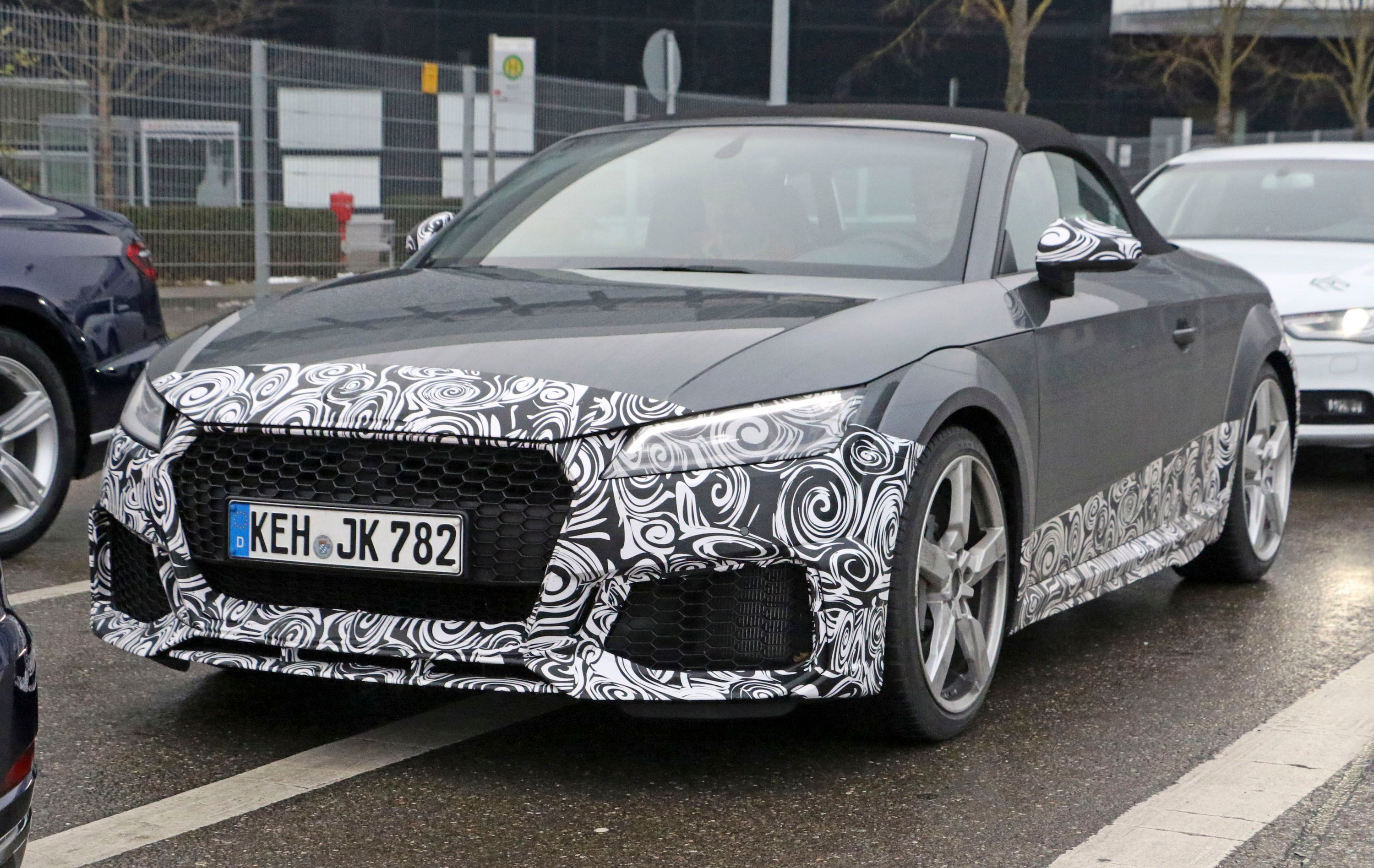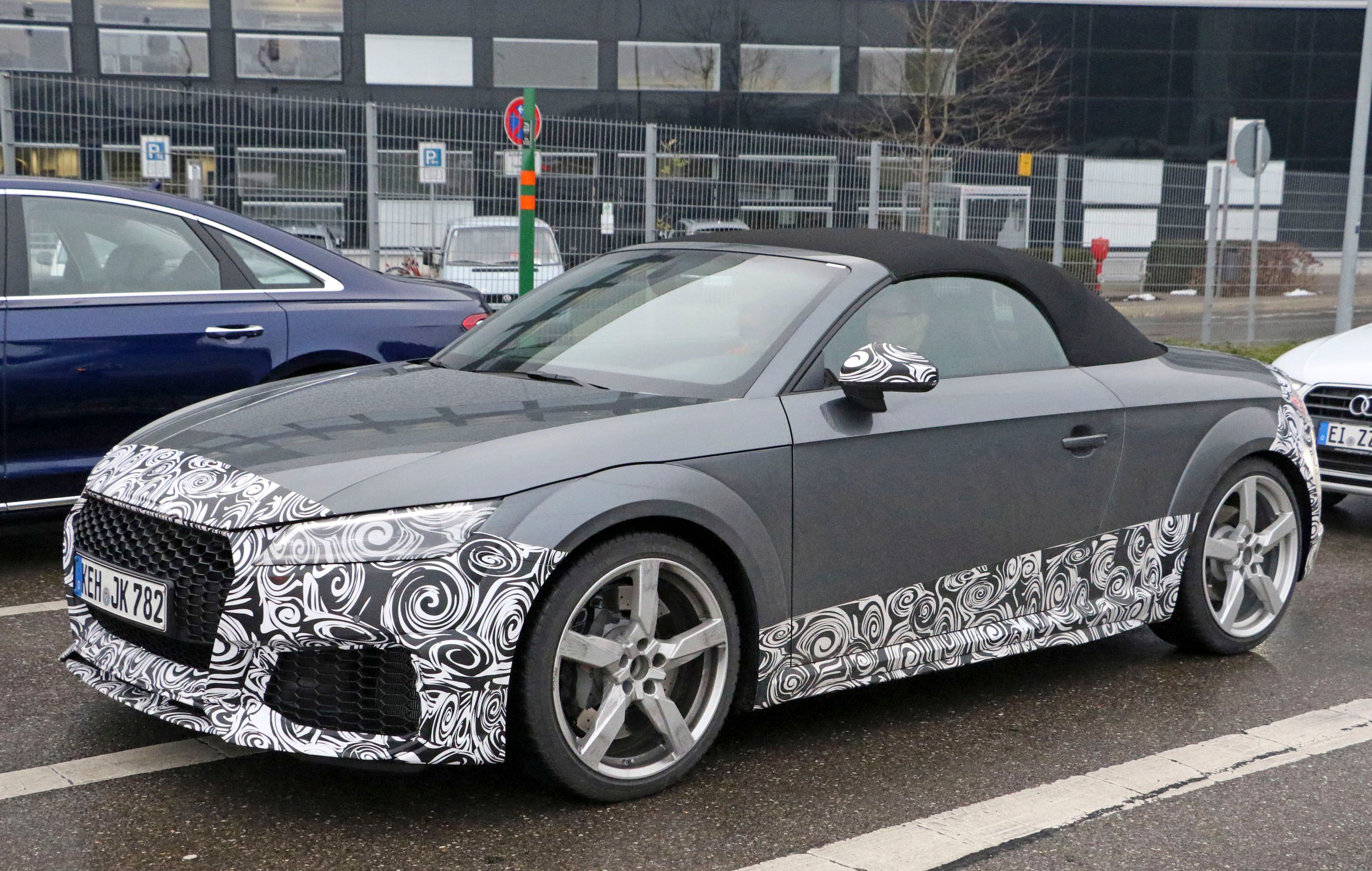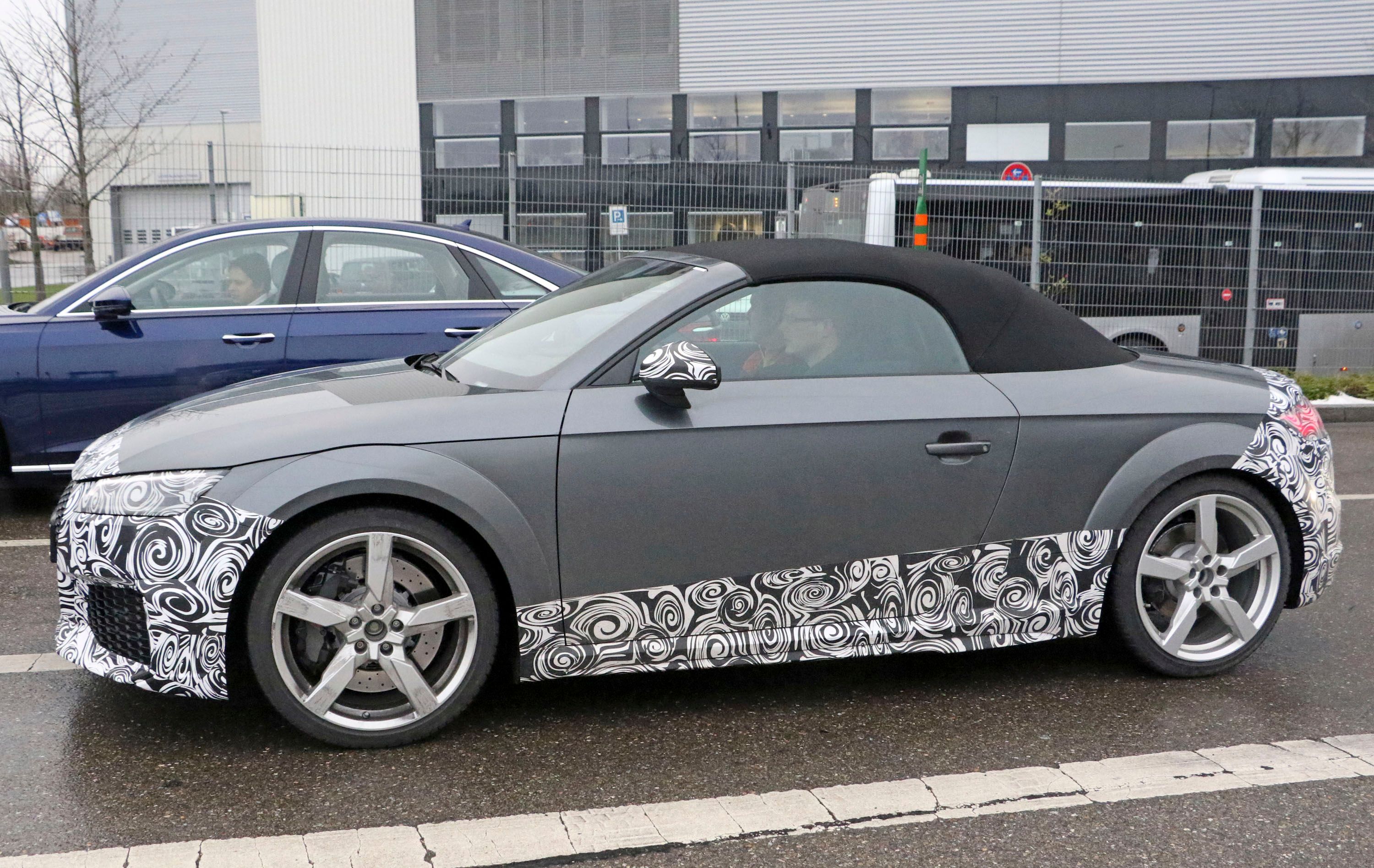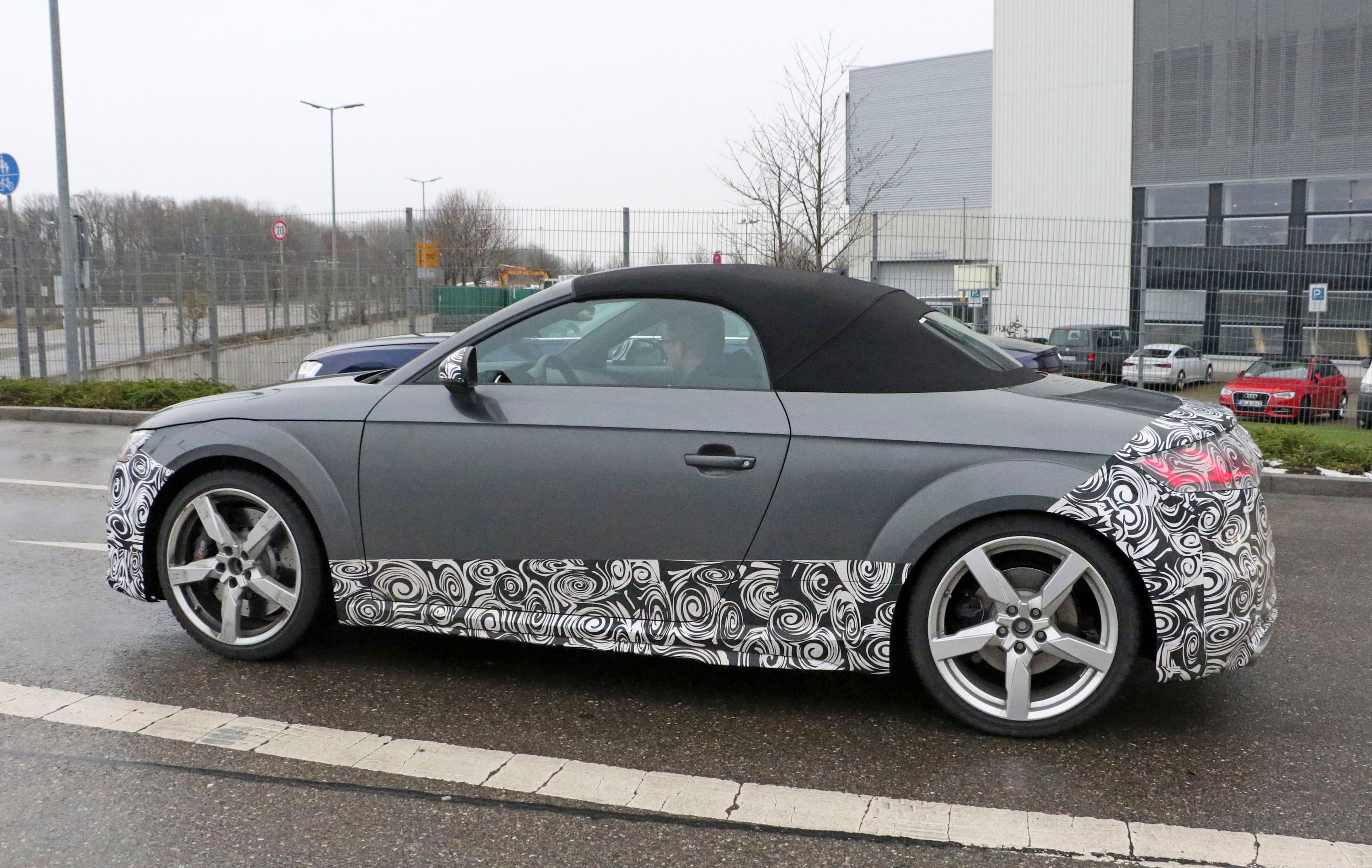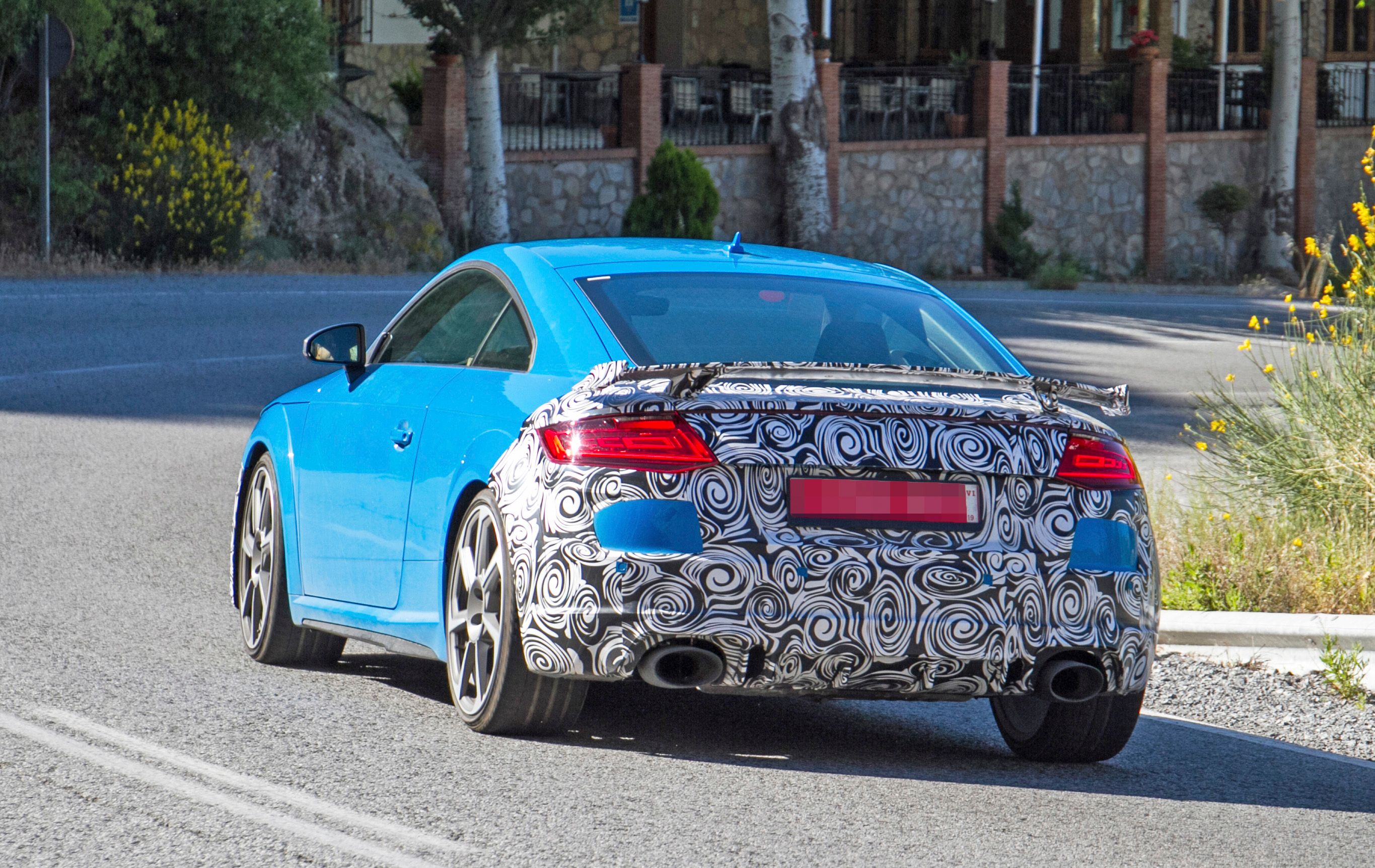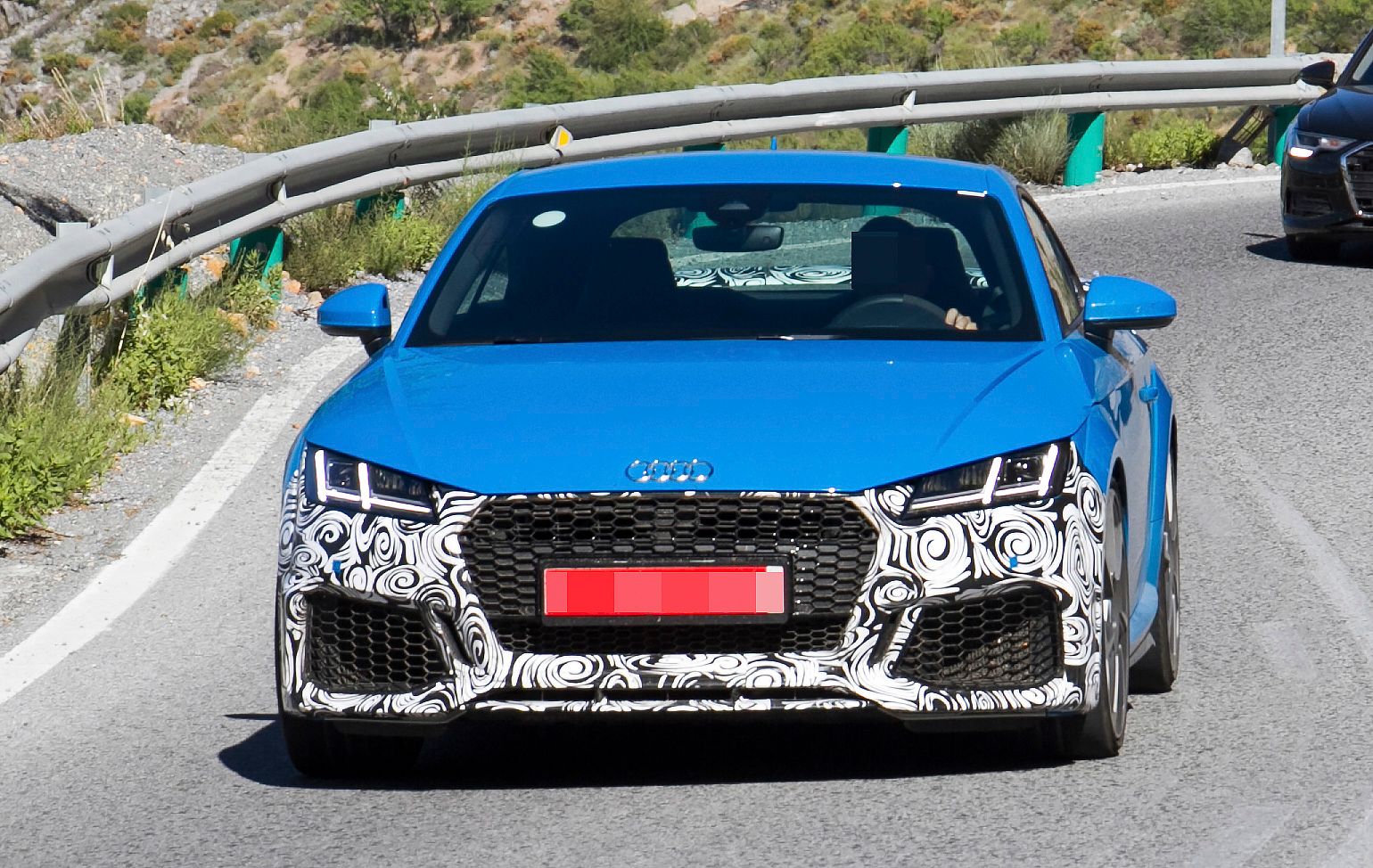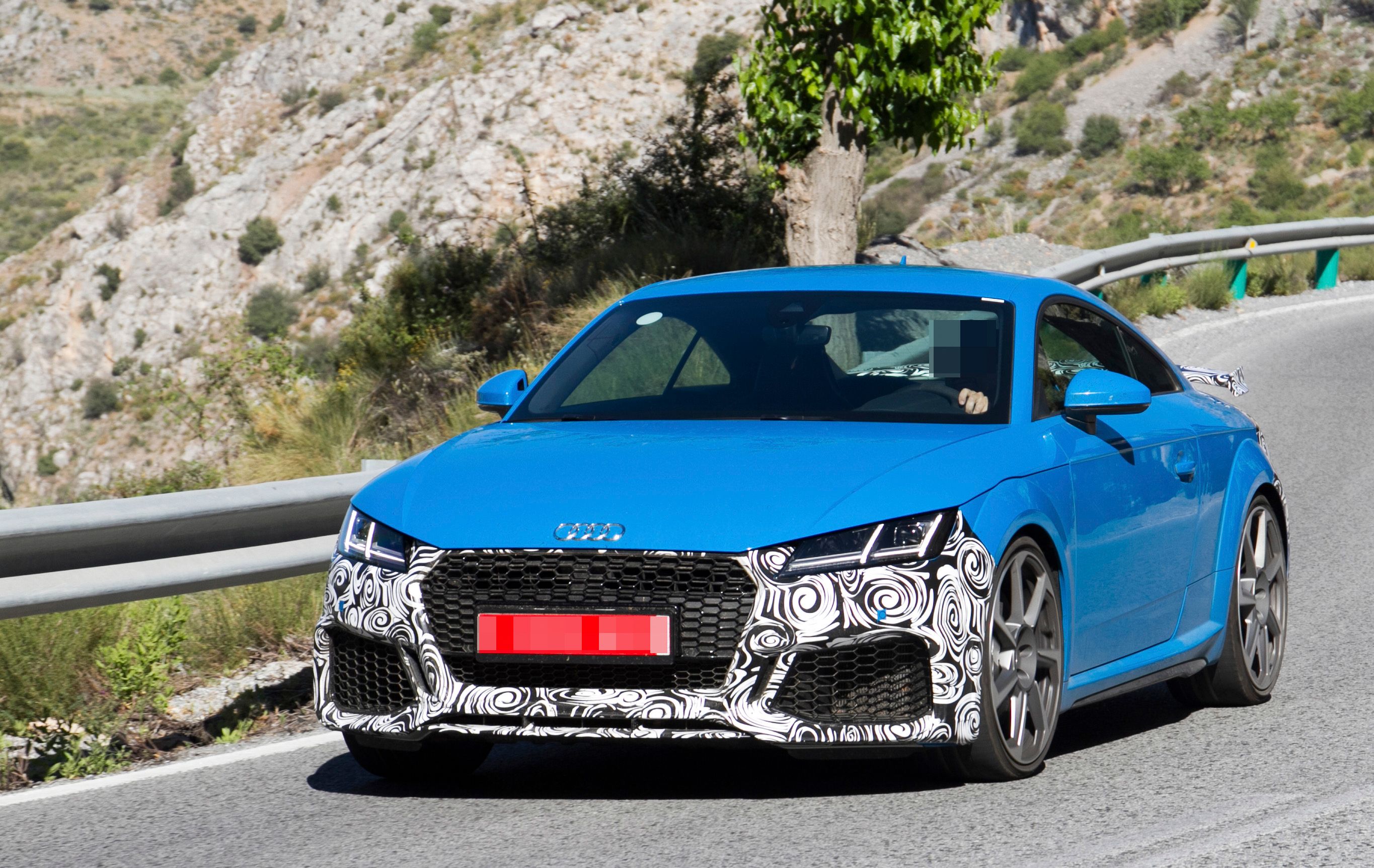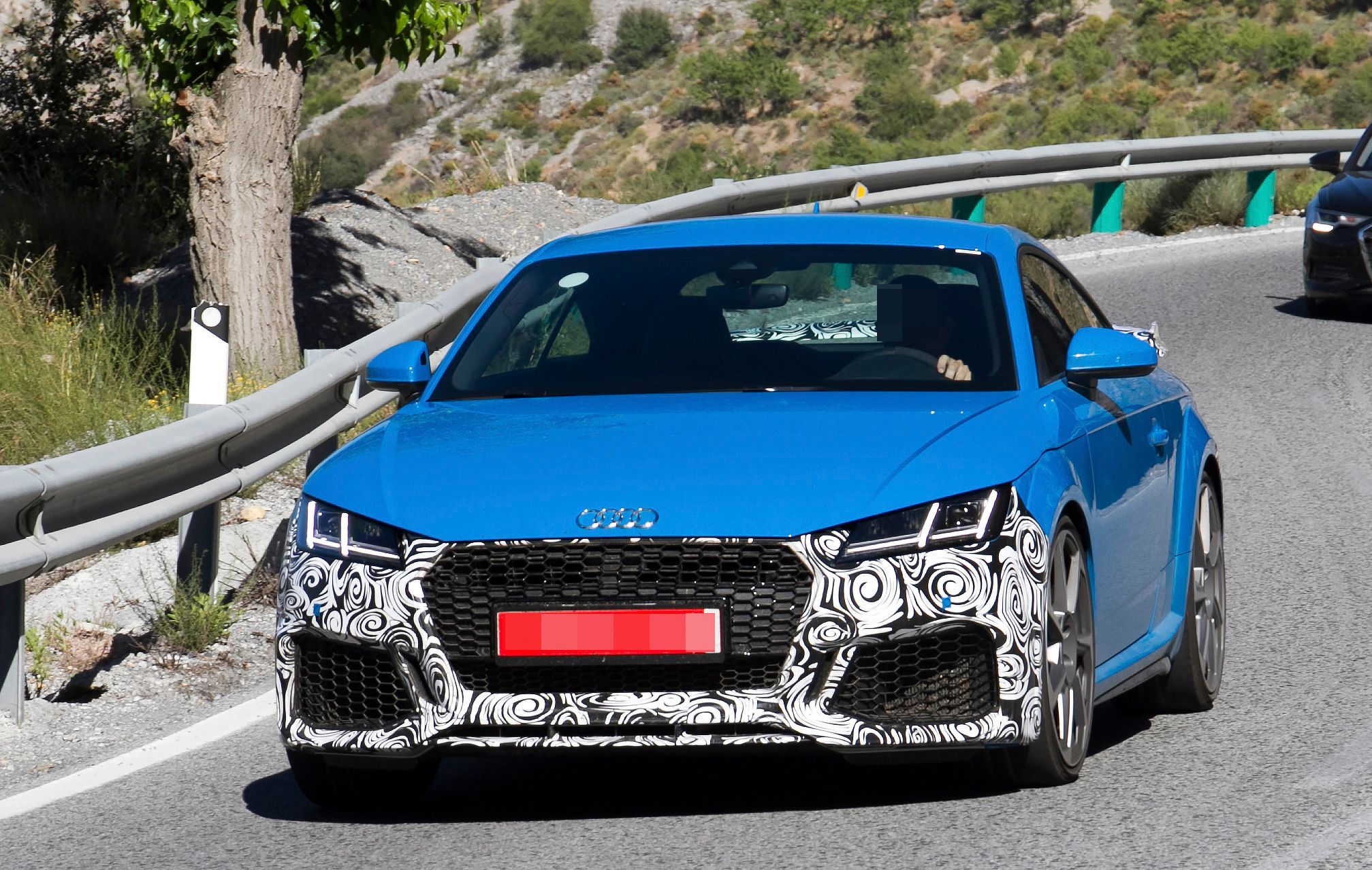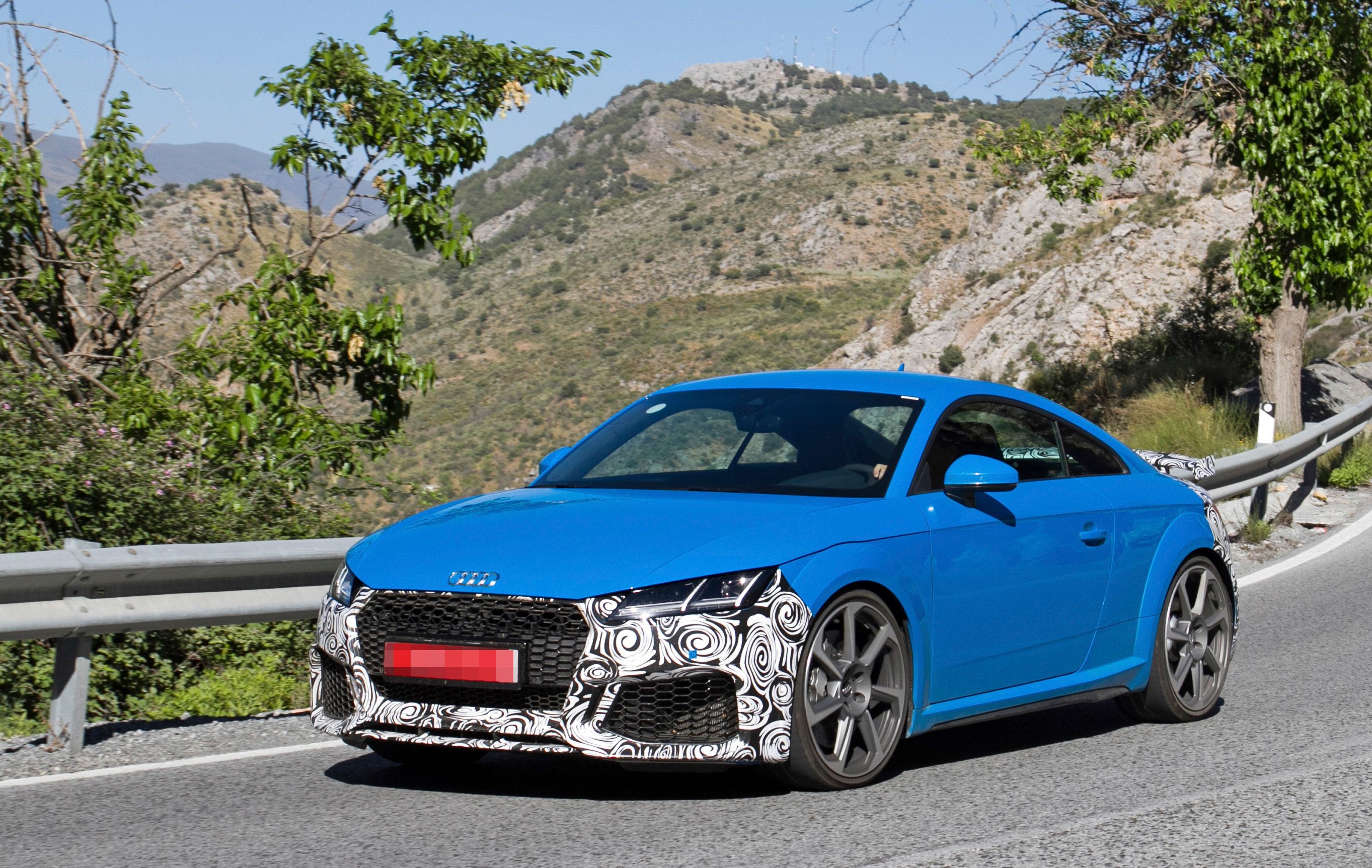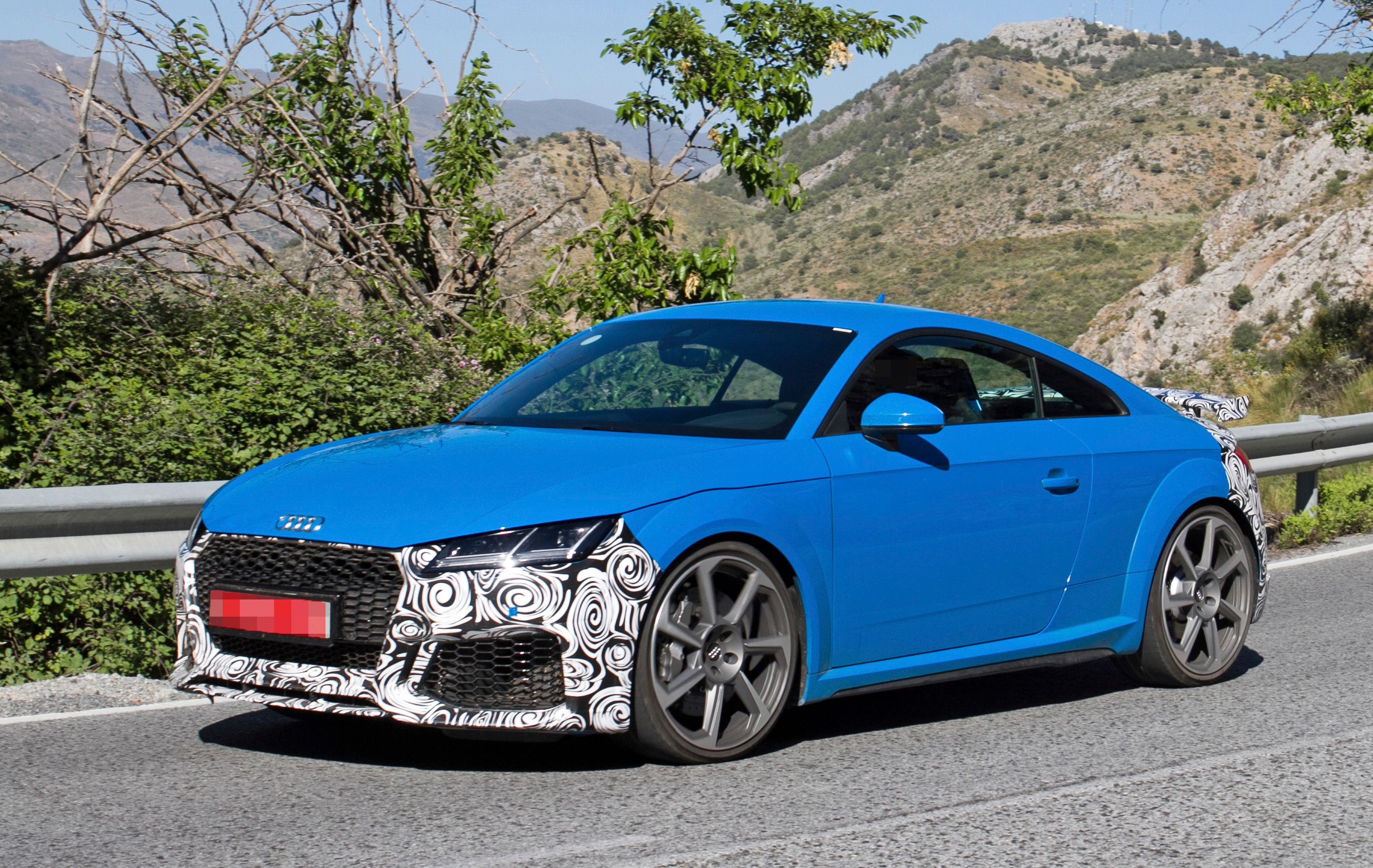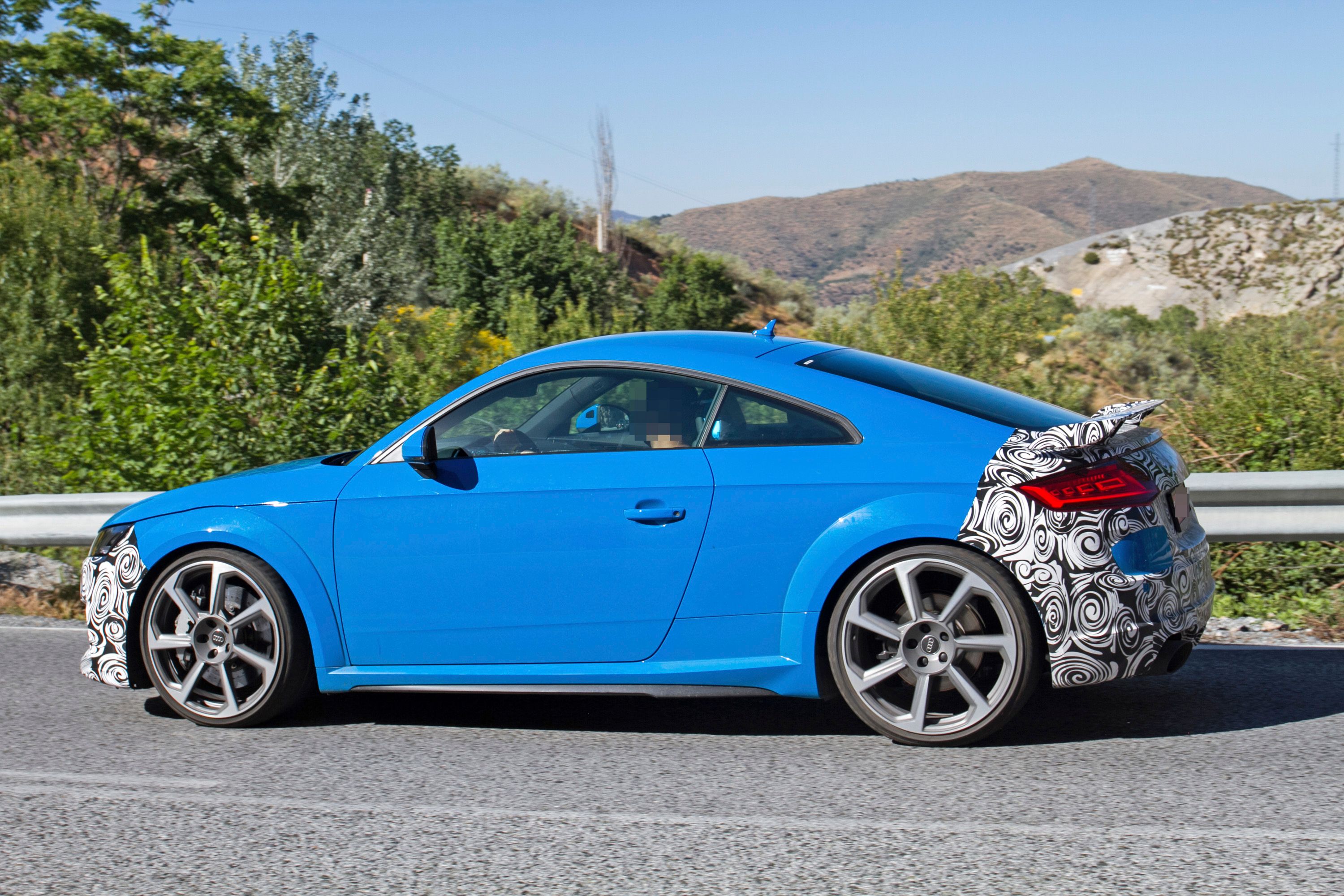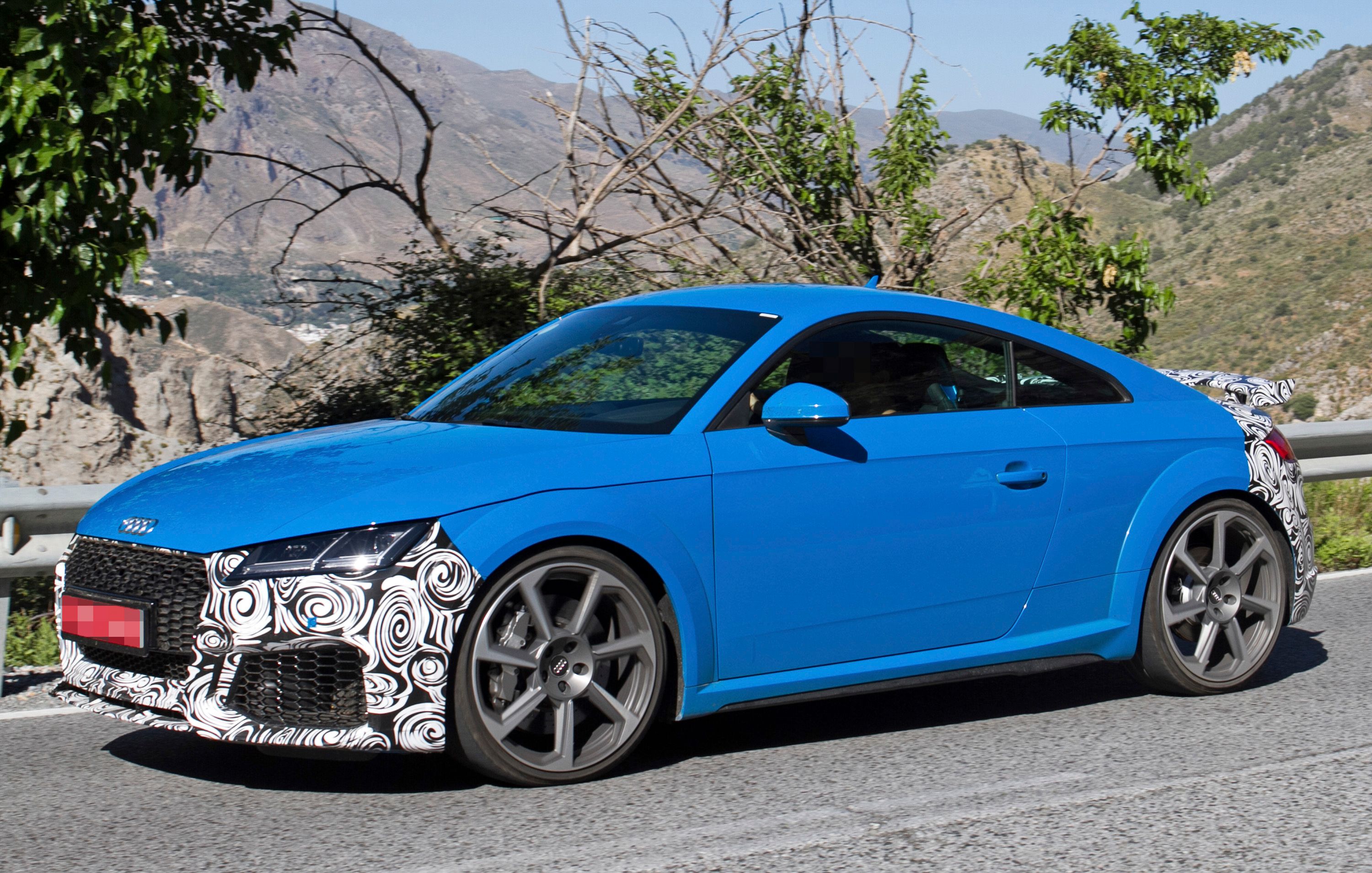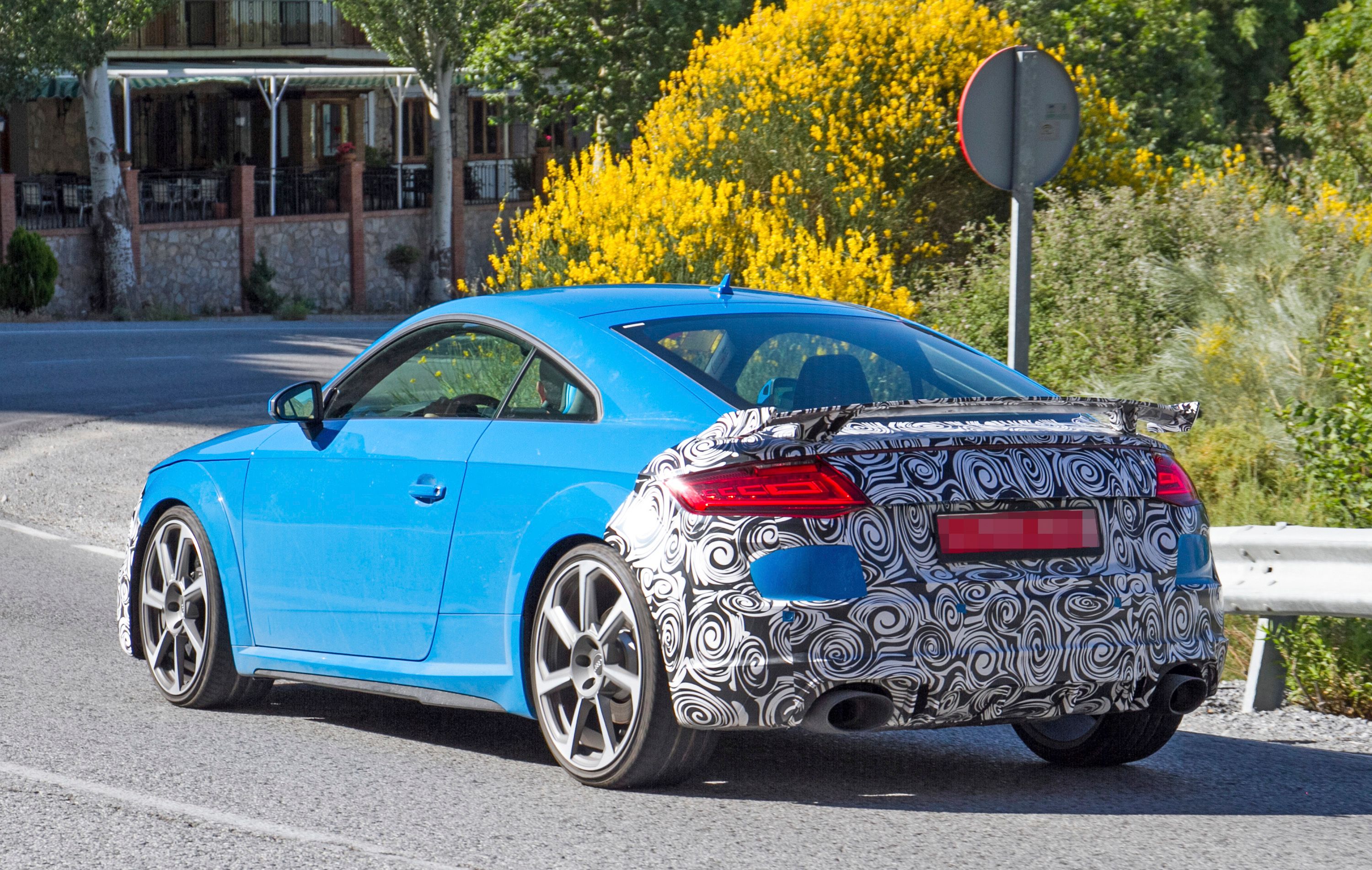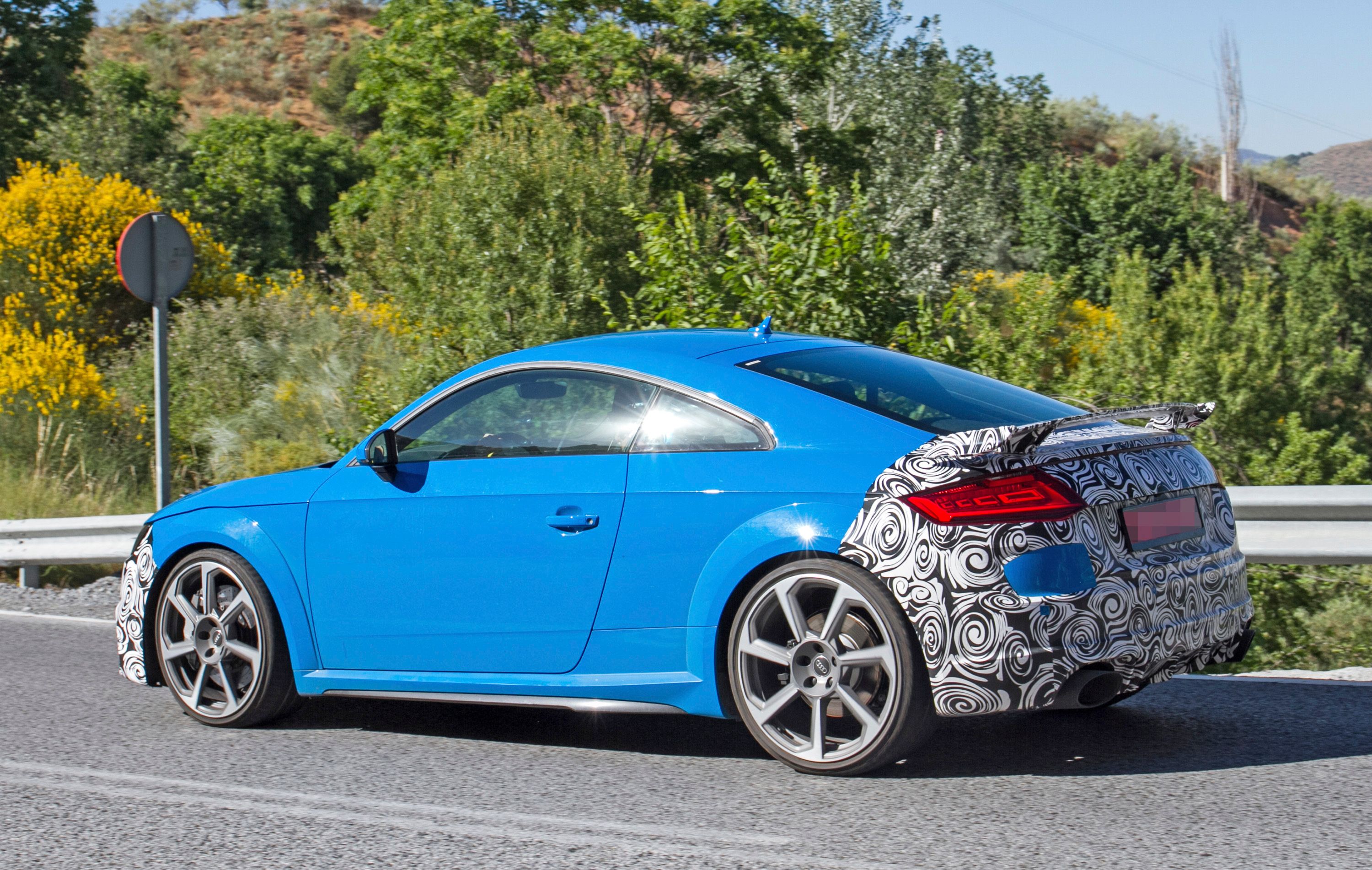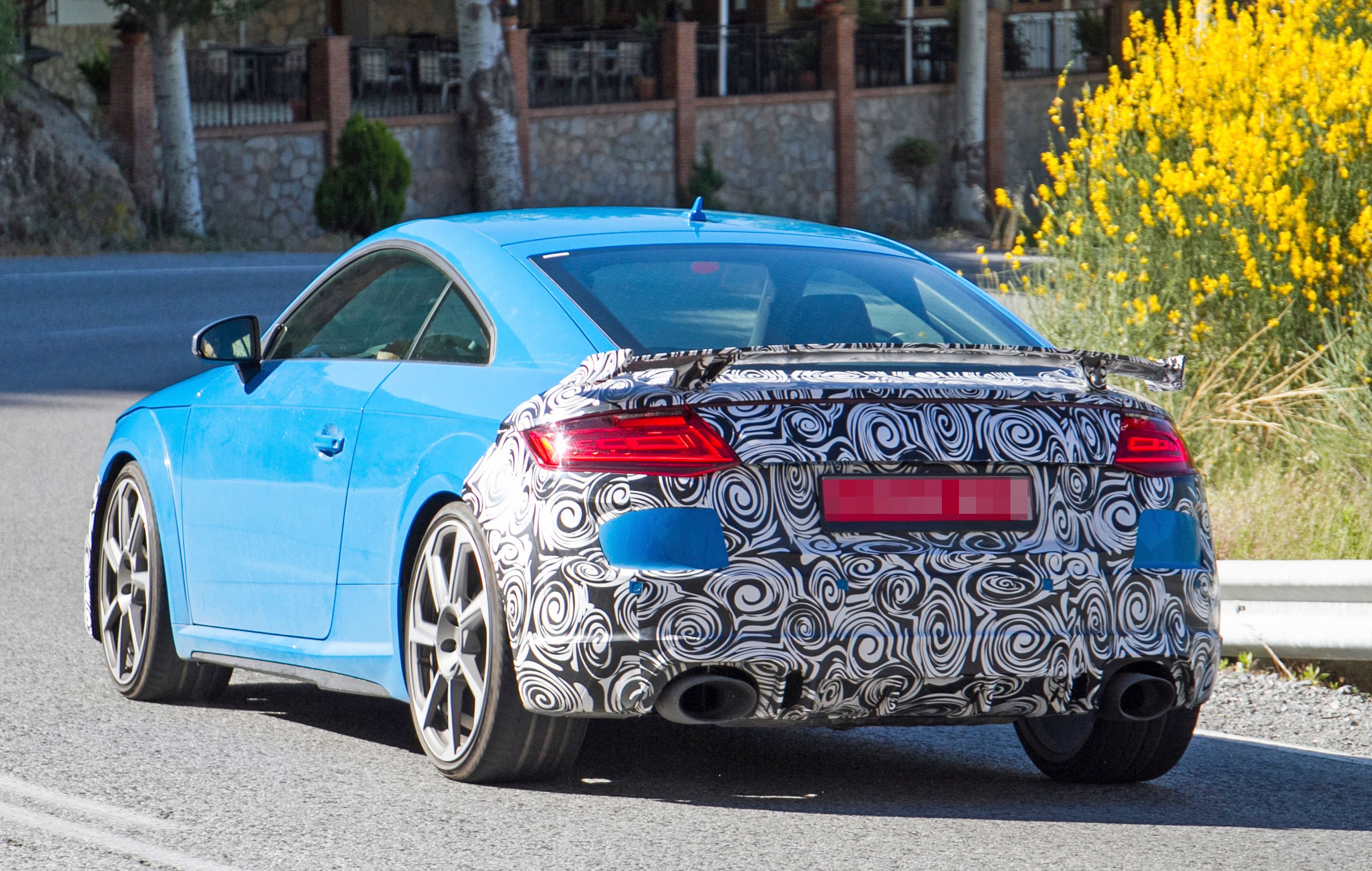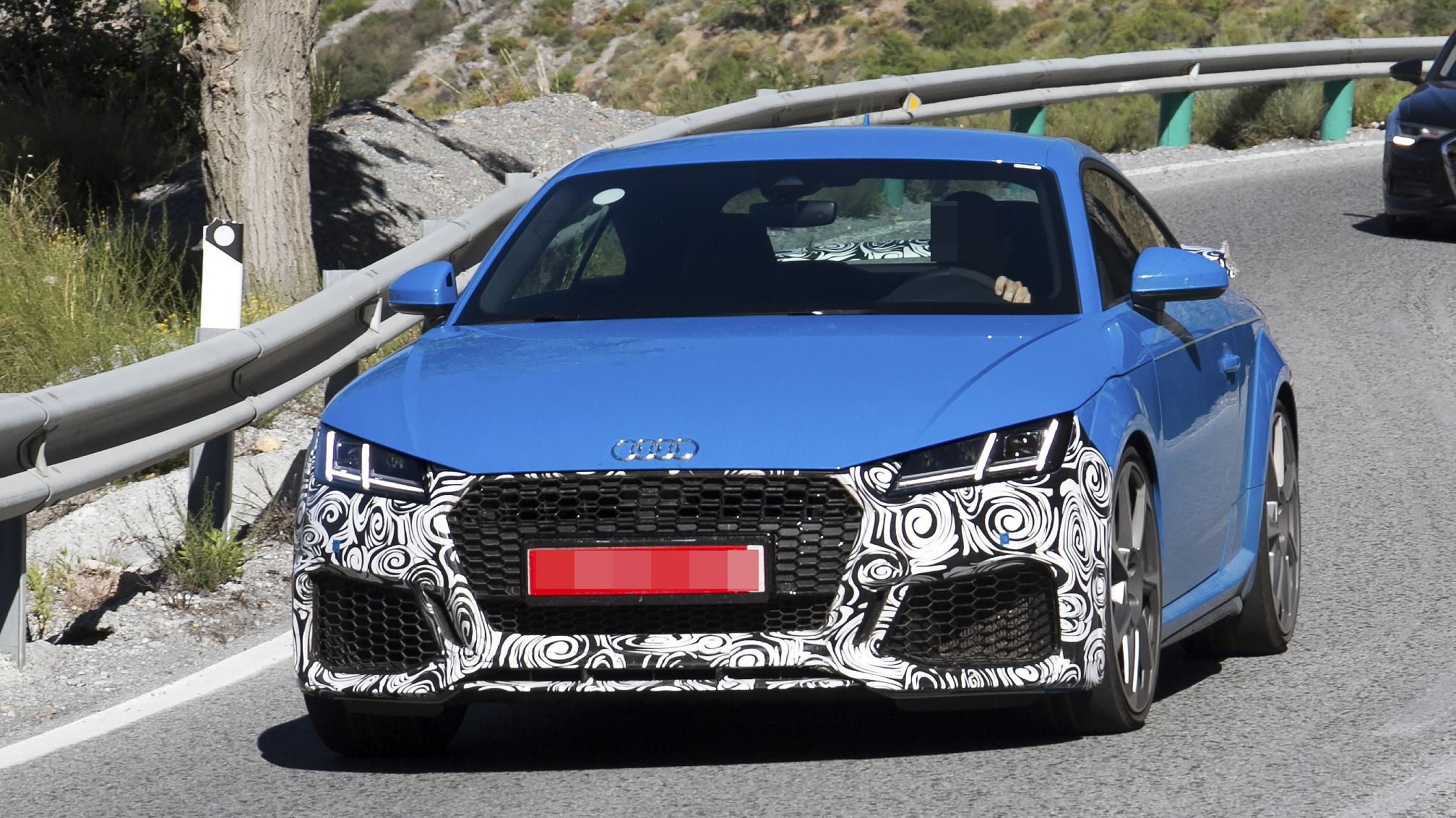The current Audi TT was unveiled in 2014, and the range-topping TT RS model was introduced for the 2017 model year. The high-revving coupe has been on the market for less than two years as of May, but Audi is already testing a mid-cycle facelift. Spotted testing on public roads in late 2017, the TT RS visited the Nurburgring track in April 2018. The coupe is still wearing camouflaged over the body parts that will get updates, but it seems that it won't be long until it's ready to go into production.
Like all Audi facelifts, expect the upgrade to bring only minor revisions inside and out. The exterior should get new bumpers and improved aerodynamics, while the cabin should receive Audi's latest technology, but retain the third-generation design layout. The German car will continue to use the turbocharged, five-cylinder engine, but revised internals should add a bit of extra power and decrease CO2 emissions. An unveiling could happen by the end of 2018, but don't expect the updated TT RS to arrive in the United States before the 2020 model year.
Updated 07/06/2018: Our spy photographers caught the upcoming Audi TT RS testing on the smaller roads in Southern Europe.
Continue reading to learn more about the Audi TT RS.
2019 Audi TT RS
- Make: Array
- Model: 2019 Audi TT RS
- [do not use] Vehicle Model: Array
Spy shots
July 6, 2018 - Audi TT RS caught testing on the smaller roads in Southern Europe
2019 Audi TT RS Exterior
Unlike new-generation cars, the facelifted TT RS wears just a bit of camouflage over the exterior elements that are upgraded for the mid-cycle refresh. The swirly wrap covers the front and rear fascias and the side skirts, so we should see updates in those areas. However, don't expect massive changes.
Up front, the first thing that catches the eye is the new grille, which is slightly larger, and the revised headlamps with a new LED pattern. The lights also look a bit slimmer, but it could be the camouflage playing a trick on the eyes. The bumper is also in for an update, but it's difficult to make out any details through the camouflage.
There's not much to talk about onto the sides, but the camo pattern suggests that the coupe should have sportier side skirts. As usual, Audi will also introduce a new wheel design. Arguably the biggest design change will be the rear wing, which has new end plates for better aerodynamics. The rear bumper and the diffuser should also gain a few modifications. Finally, the taillights should get new LED graphics under the plastic covers.
2019 Audi TT RS Interior
I have yet to see an Audi facelift bring significant changes inside the cabin, so don't expect the TT RS to be an exception from this rule. If anything, Audi will probably replace the original infotainment system with its latest feature and add some of the driving aids we've seen in recently redesigned models. Everything else should remain unchanged apart from minor trim upgrades.
Look for the same red accents on the A/C vents, red stitching on the center console, gear shifter, and doors panels, and a flat-bottom steering wheel with an RS badge. The latter should be wrapped in leather.
The 12.3-inch, digital instrument cluster should carry over too and will probably have the same three views, including a special RS screen that highlights the rev counter and provides information on torque, g-force, and tire pressure.
Some carbon-fiber and aluminum trim on the center console and door panels will further set the TT RS apart from other models, as will the sports pedals and the bolstered front seats. The options list should include MMI Navigation Plus with MMI Touch, Audi Connect module with Wi-Fi hotspot, and the Audi smartphone interface technology that displays selected apps from the cell phone directly on the screen.
2019 Audi TT RS Drivetrain
Although the five-cylinder engine in the current TT RS is based on a design from 2009 -- that's almost ten years old as of 2018 -- Audi will continue to use the turbocharged 2.5-liter unit in the high-performance coupe. But it will get some revised internals, so it could deliver a bit power than the outgoing model, which is rated at 400 horsepower and 354 pound-feet of torque. Don't expect a significant improvement though. The revised mill will probably crank out around 420 horsepower, while torque will likely climb to around 370 pound-feet.
The extra oomph shouldn't help the TT RS hit 60 mph quicker, but it Audi also manages to cut down some weight, the coupe could become a tenth-second quicker. The outgoing model reaches the benchmark in 3.6 seconds, so the new TT RS could get there in 3.5 clicks. Top speed will remain limited at the usual 155 mph, but Audi will continue to offer the option that increases the limit to 174 mph.
The seven-speed, dual-clutch, S Tronic transmission will carry over with minor upgrades, as will the Quattro all-wheel-drive system that can send up to 100 percent of the torque to the rear wheels. Don't get your hopes up for a manual transmission though.
Stopping power will come from ventilated and perforated steel discs at the front and steel monobloc discs at the rear, but an upgrade to carbon-fiber ceramic discs will be offered. The options list will also include the RS Sport Suspension Plus with adaptive dampers in magnetic ride technology. These dampers can be set electronically thanks to a system that’s integrated into the Drive Select function.
2019 Audi TT RS Prices
Facelifts usually add a small premium to the outgoing model, so expect the upcoming coupe to cost a bit more than the current $64,900. The TT RS' pricing is a bit of an issue given what the competition retails for, but more on that below.
2019 Audi TT RS Competition
BMW M2 Competition
The M2 Competition is the latest high-performance subcompact coupe from BMW. Although the "Competition" badge might suggest it's an upgrade to the M2, it actually replaces the M2. Although it's not particularly more aggressive on the outside, it does have a more powerful engine. The previous M2 engine was replaced by a unit that's closely related to the mill in the M3 and M4 and cranks out a solid 404 horsepower and 406 pound-feet of torque. Unlike the TT RS, it comes with a six-speed manual as standard, while a seven-speed dual-clutch automatic is optional. On the flipside, it's doesn't have all-wheel drive, which prevents it from being as quick as the Audi. The automatic model is the fastest version from 0 to 60 mph, needing around 4.1 seconds to hit the benchmark. That's a half-second slower than the TT RS. Top speed is identical though, being limited to 155 mph as standard and 174 with the M Driver's Package. The interior stands out by means of M Sport seats, leather upholstery, "Competition" badges, and carbon-fiber trim. Pricing for the M2 Competition is not yet available as of May 2018, but it should cost a bit more than the outgoing M2, which retails from $54,500. However, it will cost less than $60,000.
Read our full review of the 2019 BMW M2 Competition.
Porsche 718 Cayman
Updated for the 2017 model year, the familiar Cayman also received a "718" badge as a tribute to a race car built between 1957 and 1962. The facelift added sportier features on the outside and a revised dashboard, updated instrument cluster, and 911-like steering wheel on the inside. It also gained new tech, including a PCM system with smartphone connectivity, audio interface, and a 110-watt audio system. The biggest changes happened under the hood though, where the naturally aspirated engines were replaced by turbo units. The base Cayman uses a 2.0-liter flat-four rated at 300 horsepower and 280 pound-feet, while the Cayman S gets its juice from a 2.5-liter flat-four that generates 350 horses and 309 pound-feet. Less powerful than the TT RS, the Cayman is also slower. The PDK-equipped entry-level car gets to 60 mph in 4.5 seconds, while the S model reaches the benchmark in 4.2 ticks. Top speed is slightly superior at 177 mph in the Cayman S. If you need more oomph, the Cayman GTS comes with 365 horsepower on tap. The extra oomph shortens the sprint to 60 mph to 3.9 seconds, while top speed increases to 180 mph. While a bit slower, the 718 Cayman is the more affordable option, as the base model starts from $56,900. The Cayman S is significantly more expensive at $69,300, while the GTS comes in at $80,700.
Read our full stories on the Porsche 718 Cayman and 718 GTS.
Conclusion
It's hard not to love a car like the Audi TT RS. It's compact, it's light, and the engine cranks out a solid horsepower. The mill is pretty exotic too, as there aren't many five-cylinder units available out there. And it also reminds of the glorious days of the Audi Quattro from the 1980s. What's more, the TT RS is amazingly quick, hitting 60 mph a half-second faster than the competition, the Porsche Cayman included. What could you want more? On the flipside, the TT RS is a bit too expensive. And not by just a couple of grand, but almost a full $10,000 compared to the BMW M2 and the Porshe 718 Cayman. And let's face it, while the Porsche is slower, nothing beats a mid-engined layout when it comes to track fun.
References
Read our full review on the 2018 Audi TT.
Read our full review on the 2018 Audi TT RS.
Read more Audi news.









